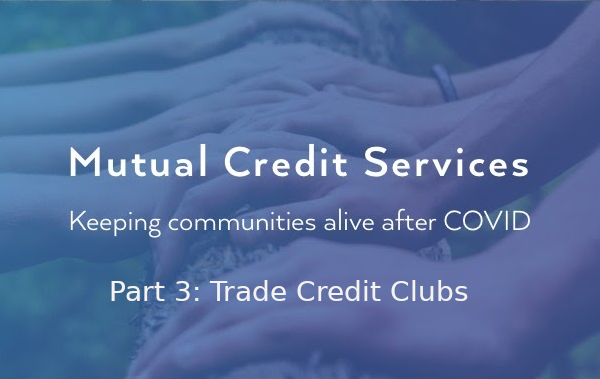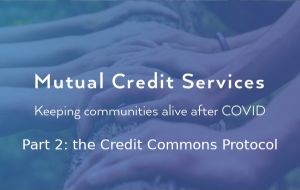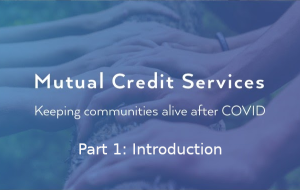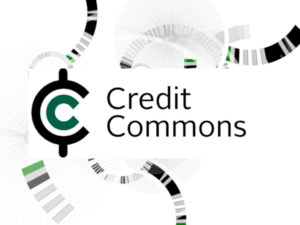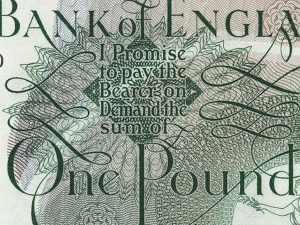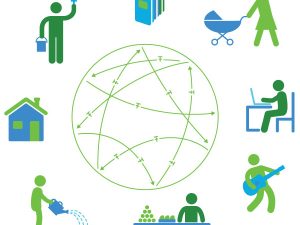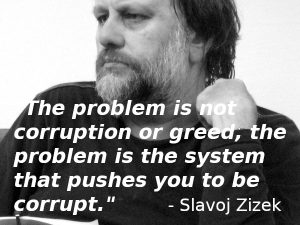This is the third in a series of articles looking at the development of Mutual Credit Services (MCS), whose mission is to help build local mutual credit ‘clubs’ in the UK and overseas, and to link them together to form a global moneyless trading network – the ‘Credit Commons’.
Here we’re looking at credit clearing and ‘Trade Credit Clubs’. We want to make all this information accessible to a general audience. Most people have no interest in code, apart from knowing what it can do.
At Lowimpact.org, we’ve been talking about the potential for mutual credit to bring about necessary, large-scale change for three or four years. Mutual credit is a tool that can help decentralise the economy, boost small businesses at the expense of multinational corporations, build community and shrink the power of banks. Together with associated ideas, it can form the basis for a new kind of economy.
Members of the Lowimpact.org co-op are involved with Mutual Credit Services. We’re often asked about the current state of play, and so we’ve put together a series of 6 articles to explain what progress we’ve made.
Here’s the list of articles:
- Introduction:
Covid, the birth of Mutual Credit Services, and building a team. - Basic explanation of the Credit Commons Protocol:
The Credit Commons is the mechanism by which mutual credit and other groups all over the world can be connected to form a new global trading system – presented in an easy-to-understand way. - Business-to-business ‘Trade Credit Clubs’ and credit clearing: A very simple way to introduce the mutual credit idea to small businesses – trade credit, something they’re already familiar with.
- Local authorities & anchor institutions: Introducing the concept to local authorities – as a way to help their local businesses that are having cashflow problems.
- Community groups & individuals: How to allow community networks and individual consumers to play too!
- Investments, savings and location: How to develop non-extractive, interest-free savings and investments in communities, alongside mutual credit trading; and why physical location is important.
3. Business-to-business ‘Trade Credit Clubs’ and credit clearing
Now we had a collaborative group, meeting fortnightly, with sub-groups; 3 routes to market; a software package to implement the Credit Commons Protocol, with a back-end implementation, a front-end in development, and an API to connect them. Chris Cook brought something else to the group. He was very familiar with mutual credit (having been on the board of LETSLink UK for many years), but was of the view that mutual credit was just one aspect of the new economy that was required. He was very clear that what was needed to resolve mutual credit accounts that were out of limit was ‘hard’ value units of some sort (although he’s not a fan of bank money). There will always be some accounts trading at their maximum, wondering why they can’t spend, and some accounts trading at their negative limit, wondering why they can’t earn. Some hard unit was going to be needed to settle accounts, as well as mutual credit (because not all trading partners will accept mutual credit, and you can’t yet pay taxes or your electricity bill with it).
We’d been thinking of ways to make this blending of mutual credit and hard currency as simple as possible for users. For a while, the idea was for users to have both mutual credit and bank-money book-keeping, with an interface that involved moving a slider to indicate what percentage of a transaction would be mutual credit and what percentage sterling, like this:

That was never going to be ideal, because if a £100 transaction was split into £50 mutual credit and £50 sterling, the accountant would be looking in two sets of books to find that £100 transaction (and wouldn’t be very happy!).
Then towards the end of 2020, we came up with a model called ‘Trade Credit Clubs’ that made things much clearer. The trade credit idea, at its simplest, can be explained like this:
If I owe you £10 and you owe me £10, then we can just ‘clear’ those debts, without either of us having to find £10. And if I owe you £10 and you owe me £15, then we can settle, and the debts can be ‘cleared’ if you just give me £5.

That idea can be extended to a group of trading businesses, so that not all invoices have to be paid. So for example, if business A owes business B £10, and business B owes business C £10, and business C owes business A £10, all those debts can be cleared without anyone needing to pay anyone anything (although of course trading networks won’t be as neat as that).
At agreed time periods (say, every month), all members can make or receive a payment (in hard currency) to bring their accounts back to zero, and then continue trading.
Then, if instead of bringing accounts back to zero, the group agrees to give each business a credit limit – voilà – you have a Mutual Credit Club. This series of slides shows how this would work with three businesses, and how much it helps their cashflow.
This was our first offer – a Trade Credit Club could be provided to a business-to-business network. It can be explained in a couple of minutes, and brings immediate benefits – especially if money is scarce. It’s a bit like a ‘business improvement club’ with mutual credit as an optional extra (although it would be a bit crazy not to use that option). Trade Credit Clubs use the same Credit Commons Protocol, but using the chess analogy, represent a slightly different way of playing chess – speed chess, for example. It does require a little bit more governance – there’s a ‘settlement period’ (to bring accounts back to zero or to within credit limits), and the protocol knows nothing about settlement periods. This kind of stuff is decided democratically within the group – but the ledgers in a Trade Credit Club operate precisely according to the Credit Commons Protocol.

Towards the end of 2020, we were part of a successful funding bid to help set up Sustenance Partners, involving local food groups in the South-West, that meant that by April 2021, we had a pilot context for the business-to-business model for a Trade Credit Network.
More information on Trade Credit Clubs.
Next week: Local authorities & anchor institutions – introducing the concept to local authorities – as a way to help their local businesses that are having cashflow problems.

